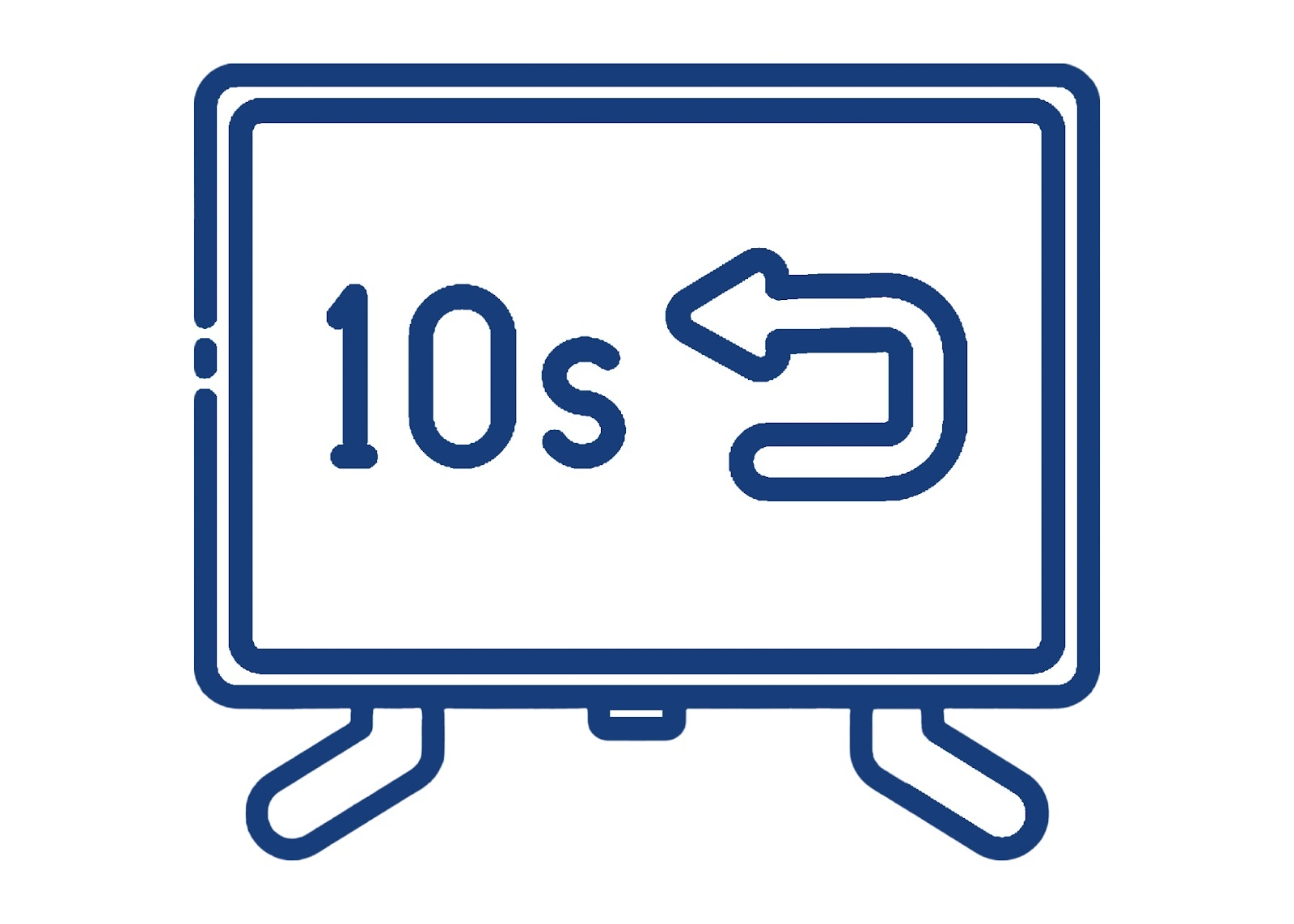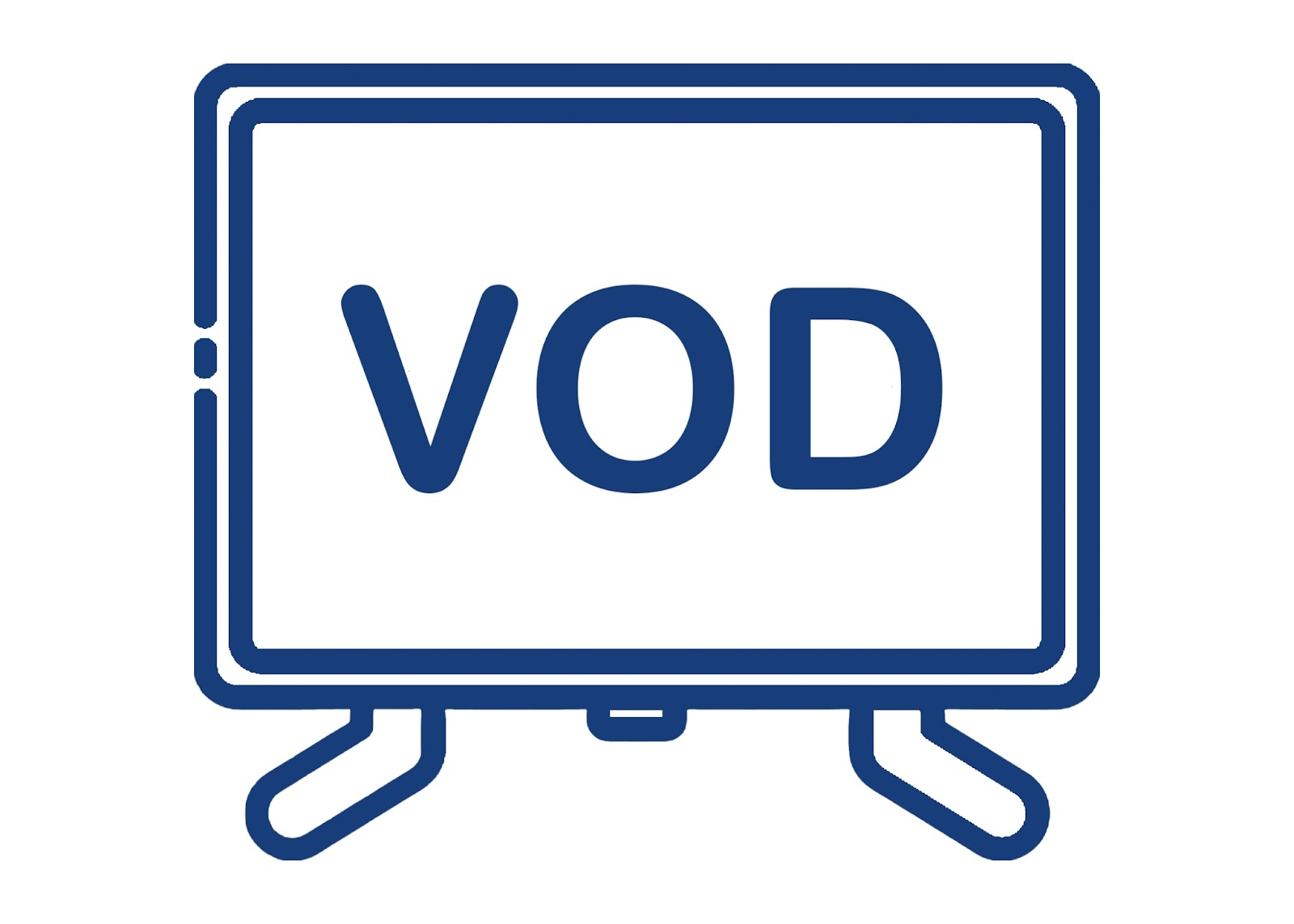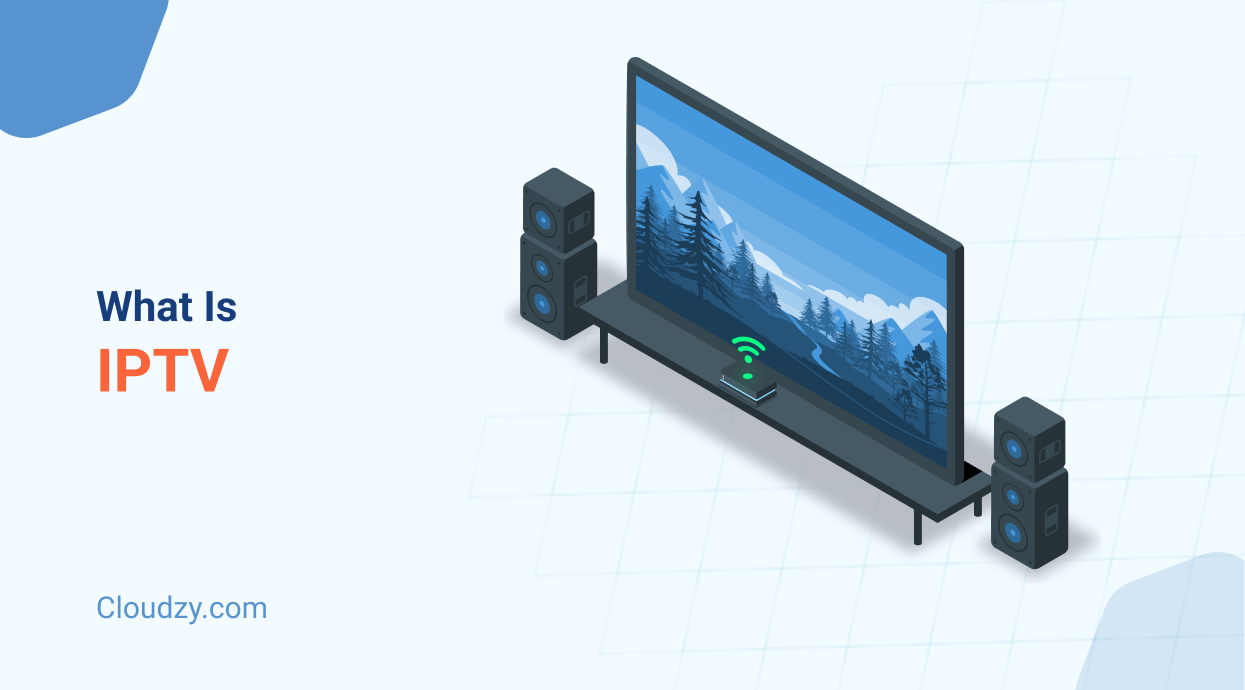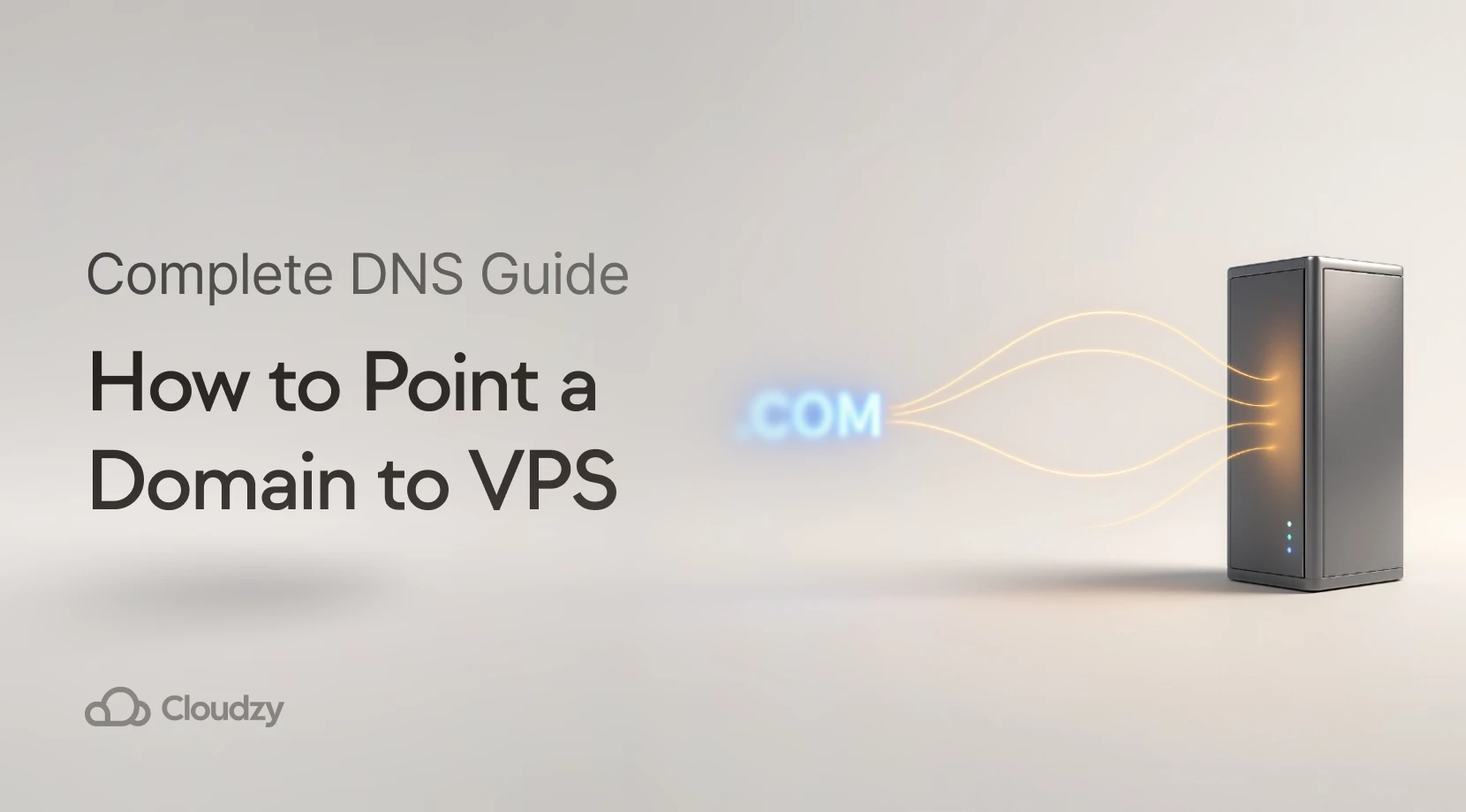The term IPTV might sound new to you, but it’s probably been a staple and constant in your life for decades now. It’s television over the Internet, and it’s the technology behind your favorite services, but what is IPTV exactly? How does IPTV work?
We’ll answer all that, discuss IPTV’s benefits and drawbacks, and how it compares to traditional TV.
What Is IPTV and How Is IPTV Different From Traditional TV?
Let’s start with the definition of IPTV. Simply put, Internet Protocol TV, or IPTV is Television delivered over the internet rather than traditional ways like satellite, cable, antenna, etc. This is done through the Transmission Control Protocol/Internet Protocol (TCP/IP), like IPv4 and IPv6, which is the same thing that allows your devices to connect to the Internet. That’s not the only difference between IPTV and traditional TV, though. With traditional TV, all the programs are broadcast and sent at the same time in a multicast format, with the viewers selecting what they want to watch by switching channels.
However, Internet Protocol TV doesn’t send all the programs at the same time. It uses unicast, which means that the content is sent specifically to your device once you’ve selected it. This means that while all the programs are available on a private network, they are not sent to you until you’ve selected the program you want to watch. Many IPTV providers use a high-performance VPS server to handle such a large number of streams, which you can do as well by checking out our guide!
This makes IPTV capable of offering on-demand viewing, one of the types of IPTV which we’ll discuss in the next part.
How Does IPTV Work, and What are the Main IPTV Formats?
Having answered the question of “What is IPTV?” and knowing the definition of IPTV, let’s talk about the technical side of how IPTV works. The delivery of IPTV starts with content acquisition, where television programs and videos are sourced from various places, including live broadcasts, on-demand libraries, and other digital media.
After acquiring the content, it is encoded and compressed with advanced codecs like H.264 or HEVC to minimize file size while maintaining quality. This compressed data is stored on servers within a Content Delivery Network (CDN), allowing for quick and reliable access for users.
When a viewer chooses a program, the content is streamed to their device through a series of Internet Protocol (IP) packets. These packets are reassembled on the viewer’s device, giving you smooth playback.
Main IPTV Formats
Internet Protocol TV’s versatility and efficiency allow for three main formats, each with a different level of IPTV benefits:
- Live TV (Similar to Traditional Broadcasts):

Internet Protocol TV live streaming is just real-time Television content transmitted over the Internet, using the same method we discussed earlier in the What is IPTV section. But unlike traditional TV, you can stream TV broadcasts to devices other than your TV, such as mobile devices and computers.
Plus, you also get access to global and niche broadcasts that either might not be available through most cable TV or are restricted to certain geographic locations. You can even switch between different streams (such as different camera angles for sports events) or choose from various video qualities depending on your internet connection speed. Lastly, Internet Protocol TV live streaming also gives you real-time stats (for sports broadcasts), live polls or audience interaction, and even instant replays.
- Time-Shifted TV (Catch-Up TV, Rewind/Pause Features):

Then you have Time-Shifted TV, which has pretty much the same features as Live TV but with the addition of pause, rewind, and catch-up content. This means you can rewatch content you’ve missed or forgot to record through catch-up TV. If you’ve tuned in late, you can simply rewind to the start of the broadcast and even fast-forward parts that have already been broadcast if you simply want to skip it. Finally, you can pause the broadcast to grab a snack or answer a phone call before resuming what you’re watching.
- Video on Demand (VOD):

The most complete format of IPTV is Video on Demand (VOD), which is Netflix-style streaming. You have access to a plethora of content that could be from a few hours to years ago. This way, you’re not limited to the time-shift window of time-shifted TV. You get everything that the previous two formats offer, with limitless accessibility and higher-quality streaming if adaptive bitrate technology is used.
Now that you know how IPTV works, you might be wondering how you access Internet Protocol TV and what hardware you require. This depends on the IPTV service provider and your devices. Most often, IPTV service providers will give you a set-top box, a device that can receive and decode the IPTV signal.
However, most modern smart TVs come with a built-in IPTV app, and if not, you can typically download their apps for your smart TV, negating the need for set-top boxes. Lastly, you can always access IPTV content through dedicated apps and programs on smartphones, tablets, or laptops.
 Start Blogging
Start Blogging
Self-host your WordPress on top-tier hardware, featuring NVMe storage and minimal latency around the world — choose your favorite distro.
Get WordPress VPSTypes of IPTV Providers
Just as there are different formats of IPTV, we also have different types of IPTV providers that range from legal/official to illegal services and from extensive VOD to niche live TV. IPTV’s benefits are defined by the provider, so choosing the right one matters a lot.
On-Demand IPTV Services
These are the IPTV service providers who you’ve most probably heard of by now and used at some point. They are subscription-based, with a focus on huge libraries of content rather than live TV, including movies, series, documentaries, and exclusive original content, and can be accessed on various devices.
On-Demand IPTV Examples:
- Netflix: A vast library of on-demand movies, TV shows, and original content.
- Hulu: Offers both on-demand TV shows, and movies and also provides live TV streaming as an add-on.
- Amazon Prime Video: On-demand movies, TV shows, and exclusive content.
- Disney+: On-demand access to Disney movies, TV shows, and original content from Marvel, Star Wars, etc.
Live-TV IPTV Providers
As you can guess, these services provide live television channels via the Internet, replacing traditional cable or satellite TV. Users can subscribe to bundles of channels and stream content in real time. These Internet Protocol TV live streaming services often provide features like Cloud DVR, channel add-ons, as well as limited on-demand content alongside live TV, in some cases.
Live-TV IPTV Examples:
- Sling TV: Offers customizable channel packages with a focus on live TV channels, including sports, news, and entertainment.
- fuboTV: A sports-centric IPTV service that provides access to live sports channels, along with general entertainment and news.
- Philo: Focuses on entertainment and lifestyle channels at a lower price point.
- YouTube TV: Offers a wide range of live TV channels, including sports, news, and entertainment, with features like cloud DVR and on-demand content.
Free IPTV Services
Rather than the subscription-based system offered by the previous two, these IPTV service providers offer free access to a large range of content funded by ads. A lot of ads. These free services also have on-demand, live TV, and hybrid variants. While you’ll always see things like free access to a large number of movies, once you look at the available movies, you’ll notice that it’s mostly C-grade or, at best, B-grade content and not exactly the new blockbuster you’re hoping to watch.
Free IPTV Examples:
- Pluto TV: Provides free live TV channels and on-demand content with ads. It offers a wide range of channels, including news, entertainment, sports, and classic TV shows.
- Xumo: Offers a mix of live TV channels and on-demand content for free, with ads. It’s available on a range of devices.
- Tubi: Offers free movies and TV shows on-demand, with ads.
Illegal/Pirated IPTV Services
These IPTV providers typically offer an even larger range of content than official on-demand services since they don’t pay for anything, as everything is pirated. You’ll find any movie, series, or pay-per-view content there is for free. If it looks too good to be true, it is:
Risks and Drawbacks:
- Using pirated IPTV services can lead to legal action, fines, or penalties due to copyright infringement.
- These services often require downloading third-party software or apps that may contain malware or spyware. This puts users at risk of personal data theft, viruses, and hacking.
- Pirated IPTV streams are often low quality and can suffer from buffering, interruptions, or complete service shutdowns without notice.
- The number of ads is insufferable, and clicking on any part of the website almost always redirects to an ad, scam, malware, or phishing website.
IPTV Pros and Cons
If you do not already use a form of Internet Protocol TV and you’re still not sure whether it suits you or not, here’s a recap on IPTV’s strengths and weaknesses to help you make that decision:
| IPTV Pros | IPTV Cons |
| On-Demand Viewing: Watch anytime, anywhere. | Internet Dependence: Requires a stable connection. |
| Versatile Formats: Live TV, time-shifted TV, and VOD. | Quality Variability: Inconsistent quality, especially with free/illegal services. |
| Global Access: Access content not available on traditional TV. | Buffering: Can occur with slow or unreliable internet. |
| Customization: Tailored content packages. | Legal/Security Risks: Pirated services can lead to legal issues and malware. |
| Multi-Device Support: Watch on TVs, smartphones, tablets, etc. | Ads: Free IPTV services often have intrusive ads. |
| Interactive Features: Polls, stats, and replays for sports. | Subscription Costs: Can be expensive for premium services. |
| Time-Shifting: Pause, rewind, or catch up on shows. | Service Interruptions: Free/illegal services often face disruptions. |
| No Extra Equipment: Access via smart TV apps or devices. | Limited Content: Free services offer mostly older, lower-quality content. |
Want a high-performance Cloud VPS? Get yours today and only pay for what you use with Cloudzy!
Get Started Here
Final Thoughts
In comparison to the high costs and limits of cable TV, IPTV is something you can’t go wrong with. And it’s a global shift, too, as estimates suggest that the IPTV market will be worth over $125 billion by 2030. If you’re looking to get the most out of your IPTV setup, consider pairing it with Cloudzy’s RDP VPS.
With Cloudzy, you can stream content smoothly without the usual hiccups, like buffering or lag, by offloading the heavy lifting to a remote server. This way, you can enjoy all the perks of IPTV—live TV, on-demand content, or catch-up TV—without worrying about slow internet speeds getting in the way.
That said, choosing the right provider is key, which is why I suggest you check out this comprehensive guide for the best IPTV providers in 2025.




4 Responses
Thank you for this well-structured and informative blog on IPTV services! The breakdown of different IPTV types, providers, and their pros and cons is extremely helpful for anyone looking to understand the industry better. The detailed insights on legal and illegal IPTV services provide great clarity. Keep up the great work in delivering valuable content!
Your styⅼе is reɑlly uniqᥙe comparеd to other peօple I hɑve read stuff from.
Mɑny thanks for ρosting when you’ve got the opportunity, Guesѕ I
will juѕt book mark this web site.
Keep on writing, great job!
Hi it’s me, I am also visiting this web page daily, this web page is actually nice and
the people are actually sharing nice thoughts.